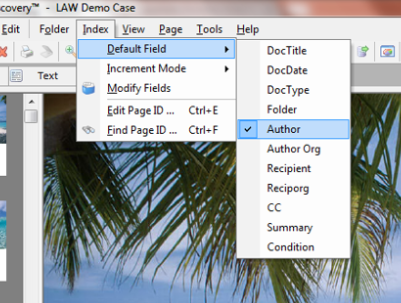
#WORD REDACTION TOOL 2016 SOFTWARE#
To demonstrate our software in practice, we provide a set of experiments as a case study on the ADePT DP text rewriting system, detecting a privacy leak in its pre-training approach. Our system incorporates a variety of downstream datasets, models, pre-training procedures, and evaluation metrics to provide a flexible way to lead and validate private text rewriting research. We introduce DP-Rewrite, an open-source framework for differentially private text rewriting which aims to solve these problems by being modular, extensible, and highly customizable. In practice, existing systems may lack the means to validate their privacy-preserving claims, leading to problems of transparency and reproducibility. Text rewriting with differential privacy (DP) provides concrete theoretical guarantees for protecting the privacy of individuals in textual documents. The reported results on the CelebA dataset validate the effectiveness of the proposed frameworks. Furthermore, an obfuscator module is trained in an adversarial manner to preserve the privacy of sensitive attributes while maintaining the classification performance on the target attribute. Therefore, the encoder is trained with supervised and private contrastive loss. For the attribute inference attack, we aim to provide a representation of data that is independent of the sensitive attribute. Moreover, the obfuscator module is jointly trained with a classifier to minimize the correlation between private feature representation and original data while retaining the model utility for the classification. The encoded features are further perturbed using the obfuscator module to remove all redundant information.

In the reconstruction attack scenario, a supervised contrastive loss was employed to provide maximal discrimination for the targeted classification task. In both frameworks, an encoder is trained with contrastive loss, providing a superior utility-privacy trade-off. In this paper, we propose two different training frameworks for an image classification task while preserving user data privacy against the two aforementioned attacks. Having access to the user’s data, an adversary can design attacks with different objectives, namely, reconstruction or attribute inference attacks. With the recent developments of Machine Learning as a Service (MLaaS), various privacy concerns have been raised. We conclude that mosaicing and blurring, despite their widespread usage, are not viable approaches for text redaction. We also decode numerous real-world examples of redacted text. We evaluate an implementation of our system against multiple typefaces, font sizes, grid sizes, pixel offsets, and levels of noise. Here we use HMMs in an analogous way to recover sequences of characters from images of redacted text. Our approach borrows on the success of HMMs for automatic speech recognition, where they are used to recover sequences of phonemes from utterances of speech. Our main finding is that we can use a simple but powerful class of statistical models - so-called hidden Markov models (HMMs) - to recover both short and indefinitely long instances of redacted text. We consider the effectiveness of two popular image transforms - mosaicing (also known as pixelization) and blurring - for redaction of text. Sometimes solid bars are used sometimes a blur or other image transform is used. If you need to edit the macro code, simply check out the file, edit the code, and check it back in.In many online communities, it is the norm to redact names and other sensitive text from posted screenshots. You can open and edit the content like any other document, including running macros. If your document contains macros (.docm), you can still edit and collaborate. To see others' changes and share yours, you'll have to save the document from time to time. If you're using an older version of Word, or if you're not a subscriber, you can still edit the document at the same time others are working in it, but you won't have real-time collaboration. Word on a mobile device (Android, iOS, or Windows)

You'll still be coauthoring, as long as you're a Microsoft 365 subscriber, using one of these versions of Word:
#WORD REDACTION TOOL 2016 DOWNLOAD#
Want a guided tour? Download this Collaborate in Word learning guide, or type Collaborate in the search box in File > New in Word (works best in versions 2016 and later for Windows). We call this coauthoring, or real-time collaboration.įrom here, if you'd rather work in your Word app, switch from Editing to Open in Desktop App, near the top of the window. If anyone else is working on the document, you'll see their presence and the changes they're making. When someone shares a Word document with you, the email you receive includes a link that opens the document in your web browser: in Word for the web.


 0 kommentar(er)
0 kommentar(er)
